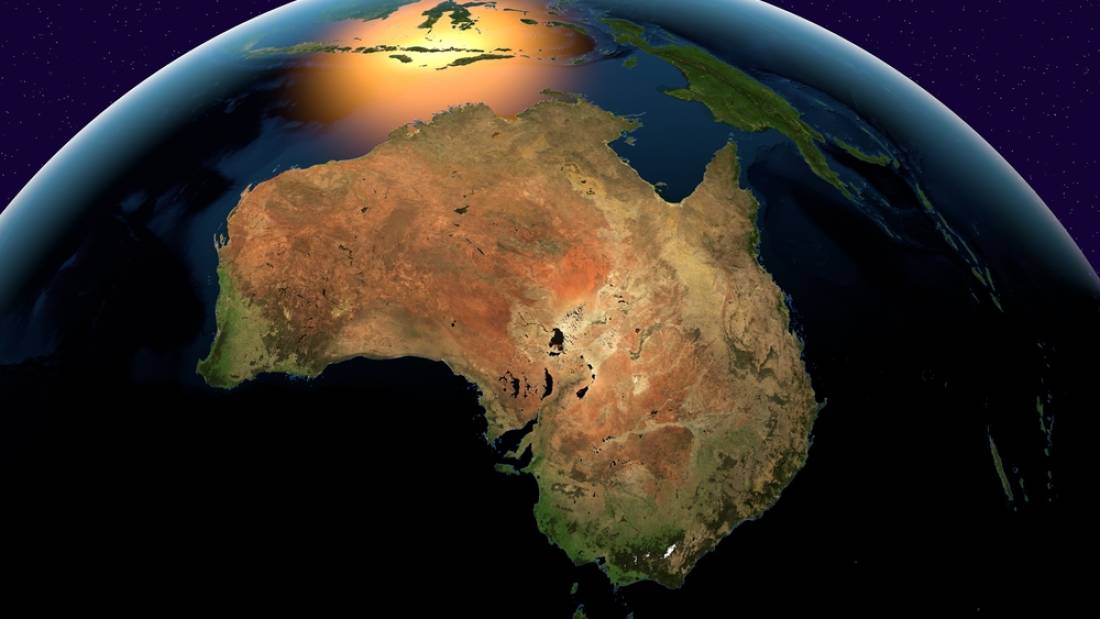The finalized ranking relies on over 50 factors to determine a given nation's Power Index ("PwrIndx") score. This allows smaller, though more technologically-advanced, nations to compete with larger, lesser-developed ones. Modifiers in the form of bonuses and penalties are added to refine the list. Some things to observe in regards to the finalized ranking:
• Ranking does not simply rely on the total number of weapons available to any one country but rather focuses on weapon diversity within the number totals to provide a better balance of firepower available (i.e. fielding 100 minesweepers does not equal the strategic and tactical value of fielding 10 aircraft carriers).
• Nuclear stockpiles are NOT taken into account but recognized / suspected nuclear powers receive a bonus.
• Geographical factors, logistical flexibility, natural resources and local industry influence the final ranking.
• Available manpower is a key consideration; nations with large populations tend to rank higher.
• Land-locked nations are NOT penalized for lack of a navy; naval powers ARE penalized for lack of diversity in available assets.
• NATO allies receive a slight bonus due to the theoretical sharing of resources.
• Current political / military leadership is NOT taken into account.
As of 4/1/2016 there are a total of (126) countries included in the GFP database.
Rank
Country
GFP Power Index rating
1
0.0897 - United States of America (North America; NATO)
5
0.1993 - France (Europe; NATO; Eunion)
6
0.2164 - United Kingdom (Europe; NATO; Eunion)
8
0.2623 - Turkey (Asia; Middle East; NATO)
9
0.2646 - Germany (Europe; NATO; Eunion)
10
0.2724 - Italy (Europe; NATO; Eunion)
11
0.2824 - South Korea (Asia)
12
0.3056 - Egypt (Africa; Middle East)
13
0.3246 - Pakistan (Asia)
14
0.3354 - Indonesia (Asia; Southeast)
15
0.3359 - Brazil (South America; Latin)
16
0.3591 - Israel (Middle East)
17
0.3684 - Vietnam (Asia; Southeast)
18
0.3909 - Poland (Europe; NATO; Eunion)
19
0.3958 - Taiwan (Asia)
20
0.4068 - Thailand (Asia; Southeast)
21
0.4071 - Iran (Middle East)
22
0.4192 - Canada (North America; NATO)
23
0.4209 - Australia (Asia)
24
0.4335 - Saudi Arabia (Middle East)
25
0.4442 - North Korea (Asia)
26
0.4514 - Algeria (Africa)
27
0.4913 - Spain (Europe; NATO; Eunion)
28
0.5147 - Greece (Europe; NATO; Eunion)
29
0.5774 - Sweden (Scandanavia; Eunion)
30
0.5867 - Ukraine (Europe)
31
0.6286 - Mexico (North America; Latin)
32
0.6378 - Czech Republic (Europe; NATO; Eunion)
33
0.6584 - Myanmar (Asia; Southeast)
34
0.6679 - Malaysia (Asia; Southeast)
35
0.7073 - Argentina (South America; Latin)
36
0.7078 - Syria (Middle East)
37
0.7112 - Switzerland (Europe)
38
0.7147 - Norway (Scandanavia; NATO)
39
0.7182 - Netherlands (Europe; NATO; Eunion)
40
0.7501 - Peru (South America)
41
0.7502 - Colombia (South America; Latin)
42
0.7619 - Ethiopia (Africa)
43
0.7744 - Romania (Europe; NATO; Eunion)
44
0.7856 - Nigeria (Africa)
45
0.7882 - Venezuela (South America; Latin)
46
0.8252 - South Africa (Africa)
47
0.8283 - Chile (South America; Latin)
48
0.8384 - Uzbekistan (Asia)
49
0.8449 - Belarus (Europe)
50
0.8453 - Denmark (Scandanavia; Europe; NATO; Eunion)
51
0.8661 - Philippines (Asia; Southeast)
52
0.8683 - Bangladesh (Asia)
53
0.8722 - Kazakhstan (Asia)
54
0.8878 - Angola (Africa)
55
0.8952 - Finland (Scandanavia; Eunion)
56
0.9011 - Morocco (Africa)
57
0.9135 - Austria (Europe; Eunion)
58
0.9301 - United Arab Emirates (Middle East)
59
0.9342 - Iraq (Middle East)
60
0.9349 - Azerbaijan (Asia)
61
0.9678 - Yemen (Middle East)
62
1.0007 - Hungary (Europe; NATO; Eunion)
63
1.0199 - Portugal (Europe; NATO; Eunion)
64
1.0241 - Singapore (Asia; Southeast)
65
1.0391 - Belgium (Europe; NATO; Eunion)
66
1.0611 - Afghanistan (Asia)
67
1.0657 - Bulgaria (Europe; NATO; Eunion)
68
1.0733 - Croatia (Europe; NATO; Eunion)
69
1.1582 - Ecuador (South America)
70
1.2354 - Jordan (Middle East)
71
1.2356 - Sudan (Africa)
72
1.3169 - Libya (Africa)
73
1.3384 - Democratic Republic of the Congo (Africa)
74
1.3687 - Slovakia (Europe; NATO; Eunion)
75
1.3731 - Kenya (Africa)
76
1.4089 - Tunisia (Africa)
77
1.4219 - Oman (Middle East)
78
1.4601 - Kuwait (Middle East)
79
1.4637 - Cuba (Central America)
80
1.5148 - Georgia (Asia)
81
1.5483 - Bolivia (South America)
82
1.5508 - Zimbabwe (Africa)
83
1.5868 - Serbia (Europe)
84
1.6268 - Sri Lanka (Asia)
85
1.6539 - Zambia (Africa)
86
1.6722 - Turkmenistan (Asia)
87
1.7981 - Mongolia (Asia)
88
1.8224 - Cambodia (Asia; Southeast)
89
1.8307 - Chad (Africa)
90
1.8564 - Albania (Europe; NATO)
91
1.8778 - Bahrain (Middle East)
92
1.8793 - Uganda (Africa)
93
1.8956 - Qatar (Middle East)
94
1.9113 - Armenia (Asia)
95
1.9243 - Lebanon (Middle East)
96
1.9561 - Tanzania (Africa)
97
1.9598 - Lithuania (Europe; NATO; Eunion)
99
1.9801 - South Sudan (Africa)
100
2.0476 - Ghana (Africa)
101
2.0791 - New Zealand (Asia)
102
2.1576 - Guatemala (South America)
103
2.1777 - Latvia (Europe; NATO; Eunion)
104
2.2177 - Paraguay (South America; Latin)
105
2.2291 - Uruguay (South America; Latin)
106
2.2407 - Cameroon (Africa)
107
2.2971 - Honduras (Central America)
108
2.3061 - Mozambique (Africa)
109
2.3138 - Estonia (Europe; NATO; Eunion)
110
2.3158 - Kyrgyzstan (Asia)
111
2.3958 - Slovenia (Europe; NATO; Eunion)
112
2.4322 - Tajikistan (Asia)
113
2.4372 - Nicaragua (Central America)
114
2.4719 - Niger (Africa)
115
2.4901 - Ivory Coast (Africa)
116
2.6638 - Mali (Africa)
117
2.7535 - Madagascar (Africa)
118
2.8204 - Gabon (Africa)
119
2.8447 - Republic of the Congo (Africa)
120
2.8574 - Bosnia and Herzegovina (Europe)
121
2.8947 - Laos (Asia; Southeast)
122
3.0997 - El Salvador (Central America)
123
3.2877 - Panama (Central America)
124
3.3534 - Namibia (Africa)
125
3.4241 - Somalia (Africa)
126
3.7343 - Central African Republic (Africa)
Read more »




